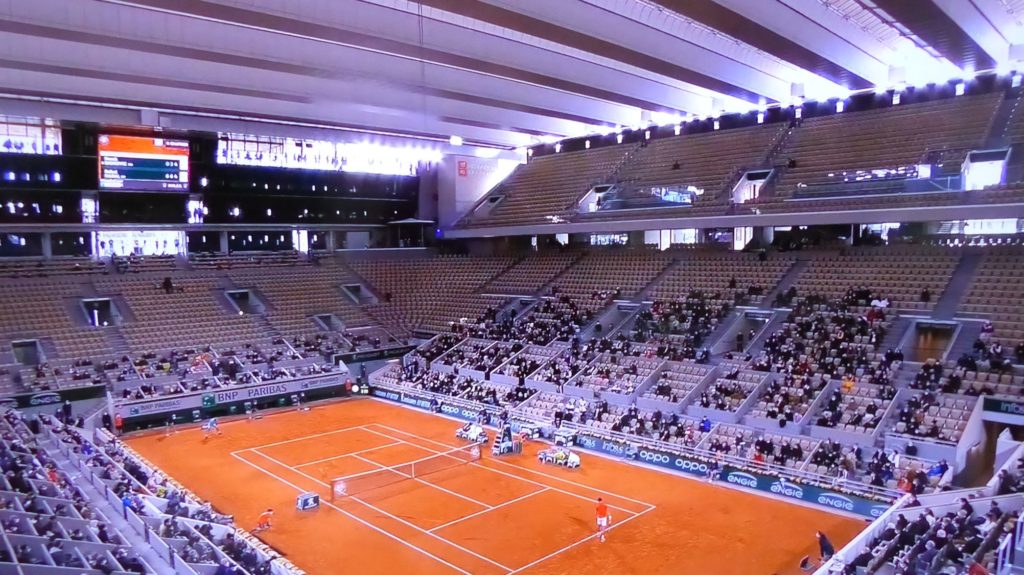
The best part of the 2020 French Open may have been that there were people in the stands. After the US Open with its broad skims covering most of the courtside areas in Arthur Ashe Stadium, the mere presence of people in seats in the lower levels of Court Philippe Chatrier was a sign some normalcy has returned to the sport.
A first example of that was a second-round, evening match between Pierre-Hugues Herbert and Alexander Zverev on the first Wednesday. The Frenchman lost to Zverev in five sets but the enthusiastic support of his compatriots was familiar and created an atmosphere resembling past crowds in Court Philippe Chatrier.
The fact that spectators, sparse as they were with a public health daily limit of 1,000 paying customers in the 15,000-capacity arena, could cheer and applaud was a major plus. They seemed partial to women’s champion Iga Swiatek during the women’s final and to men’s winner Rafael Nadal in his championship match – and in proportion to the way things would likely have been in a fully-filled stadium.
There was lots of drama in matches over the 15 days of an event sometimes known as Les Internationaux de France, but Swiatek and Nadal had about as smooth-sailing a seven-match run as is possible. The 19-year-old Pole lost just 28 games in 14 sets while Nadal was 21/21 in sets while winning his 13th Coupe des Mousquetaires, including a 6-0, 6-2, 7-5 dispatching of world No. 1 Novak Djokovic in Sunday’s final. That was comparable to Swiatek’s 6-4, 6-1 domination of No. 4 seed Sofia Kenin in the previous day’s title match.
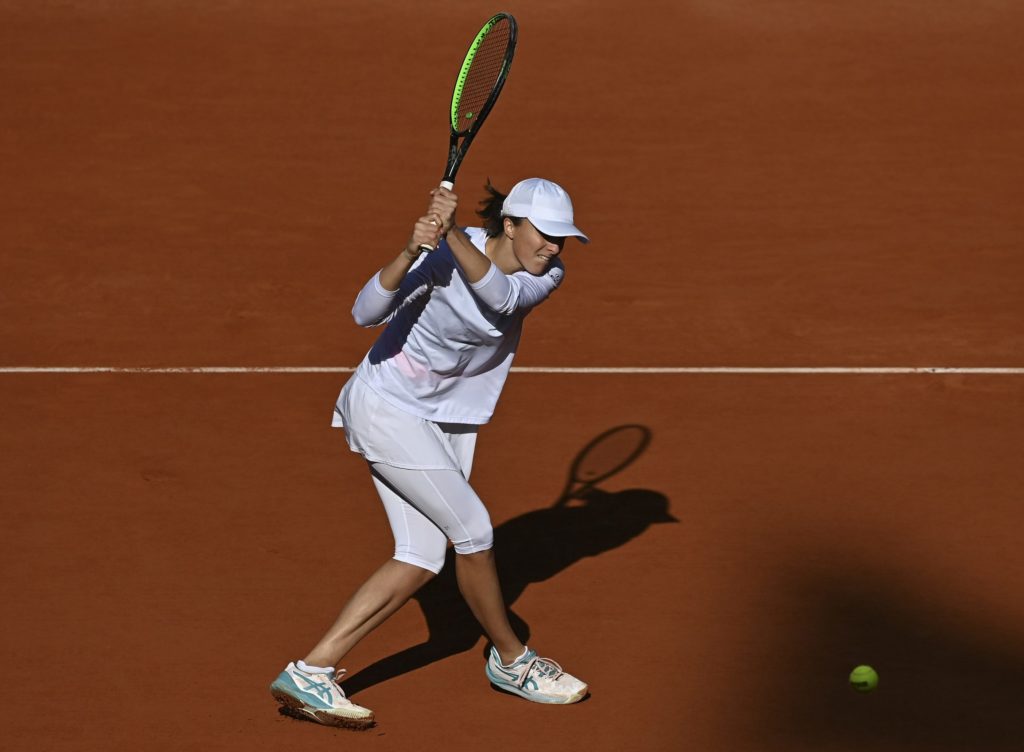
Swiatek, who entered the event ranked No. 54, left it at No. 17 and with her first Grand Slam singles title. The 5-foot-9 athlete has an outstanding game – she’s able to make all the shots with gusto, is an excellent mover and has a fine match-playing temperament.
It’s impossible not to compare her to Bianca Andreescu, who made her breakthrough at the 2019 US Open. Andreescu was 19 and almost three months when she won at Flushing Meadows and Swiatek was 19 and four months when she triumphed Saturday in Court Philippe Chatrier.
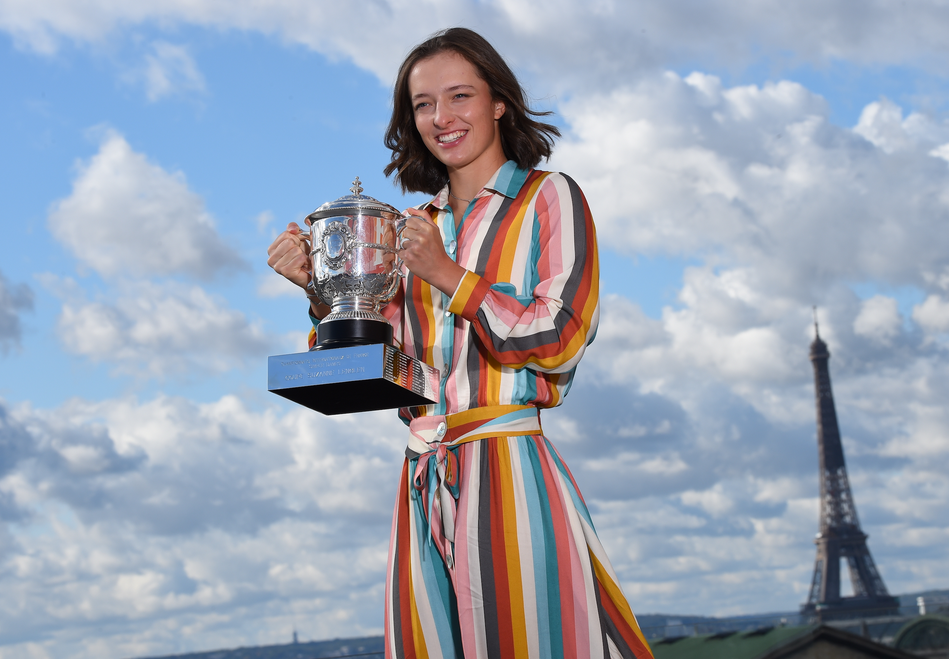
Swiatek is familiar to Toronto tennis fans because she performed well at the 2019 Rogers Cup – qualifying and then playing an entertaining centre court match in the third round – a 7-6(4), 6-4 loss to No. 2-ranked Naomi Osaka. She has cited that match as playing a role in her maturing and getting used to competing against top players on big stages.
Rogers Cup tournament director Karl Hale recalls the then 18-year-old as having a winsome personality. That, as well as her unique brand of dynamic tennis, should add a lot to the women’s game in the coming years.
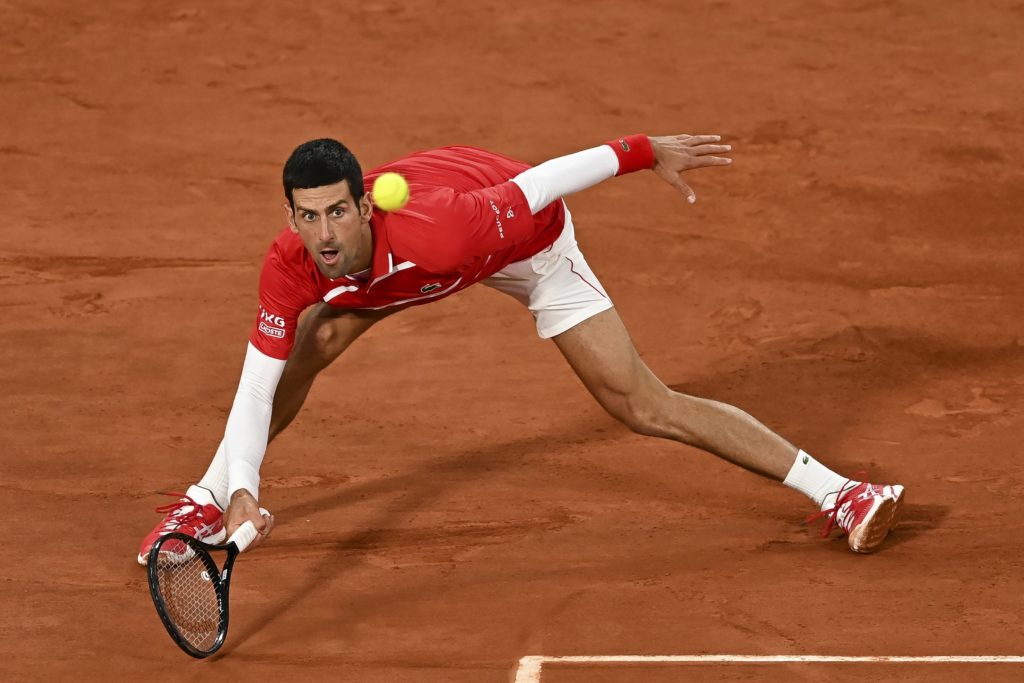
It is unfortunate that Kenin, and probably Djokovic as well, were not at their physical best in the two finals. Kenin had an upper left leg injury and the erratic way Djokovic started against Nadal – four drop shots in the very first game – indicated there may have been something gnawing at him after he had experienced neck and upper left arm issues in previous rounds, as well as possible fatigue after his five-set semi-final against Stefanos Tsitsipas. His 52 unforced errors, to just 14 for Nadal, were uncharacteristic for a player as great as the Serb. But, one of the sport’s most gracious losers, Djokovic denied he had any issues in his post-match media appearances.
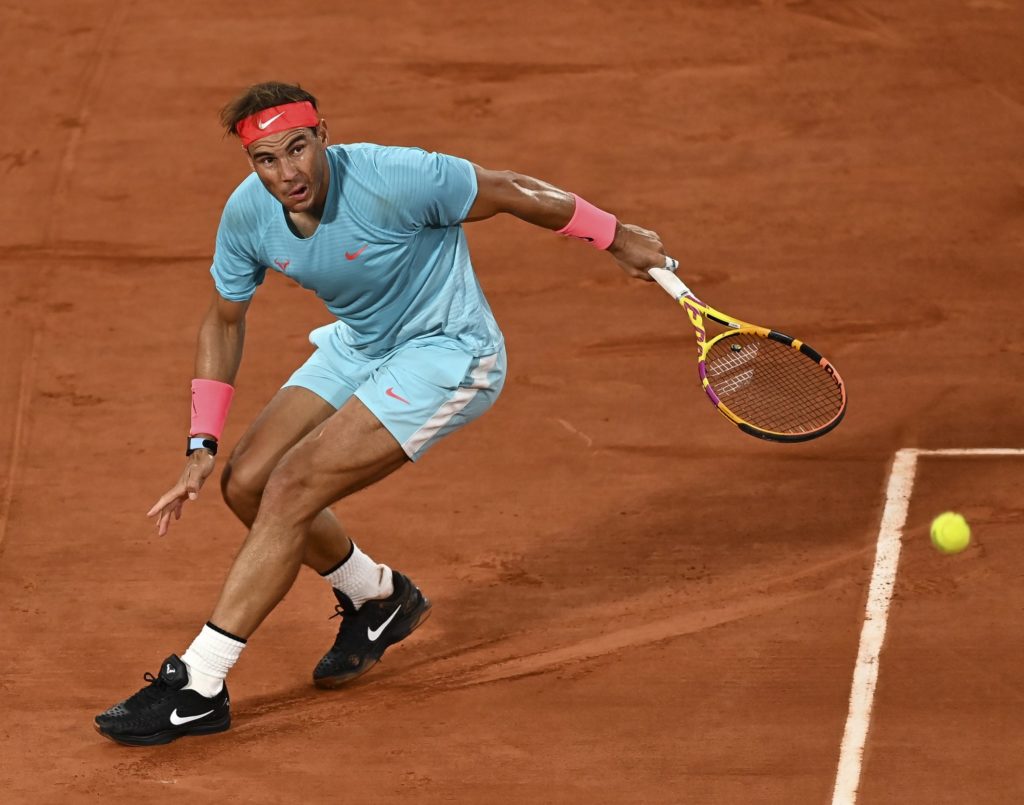
Despite his incredible 13 titles, Nadal might even have had a more impressive total. In 2004, at 18, he suffered a stress fracture in his left foot while playing Richard Gasquet in Estoril six weeks before Roland Garros. The injury kept him out of that year’s tournament although he did briefly attend while on crutches. It’s not impossible he was actually good enough to win outright at that time – and he certainly thought that himself.
There were also losses to Robin Soderling (a knee problem and a family issue) in 2009 and to Djokovic in 2015 (at a low ebb in confidence with no pre-Roland Garros clay-court titles) and as well as 2016 when a left wrist injury forced him to withdraw from a third-round match. Thinking 17 may have been a possibility is a bit of a stretch, but in hindsight 15 may not have been beyond of the realm of possibility.
His semi-miraculous total of 13 titles very likely puts his accomplishment in the ‘never to be beaten (or equalled)’ category – at least for the next four or five decades.
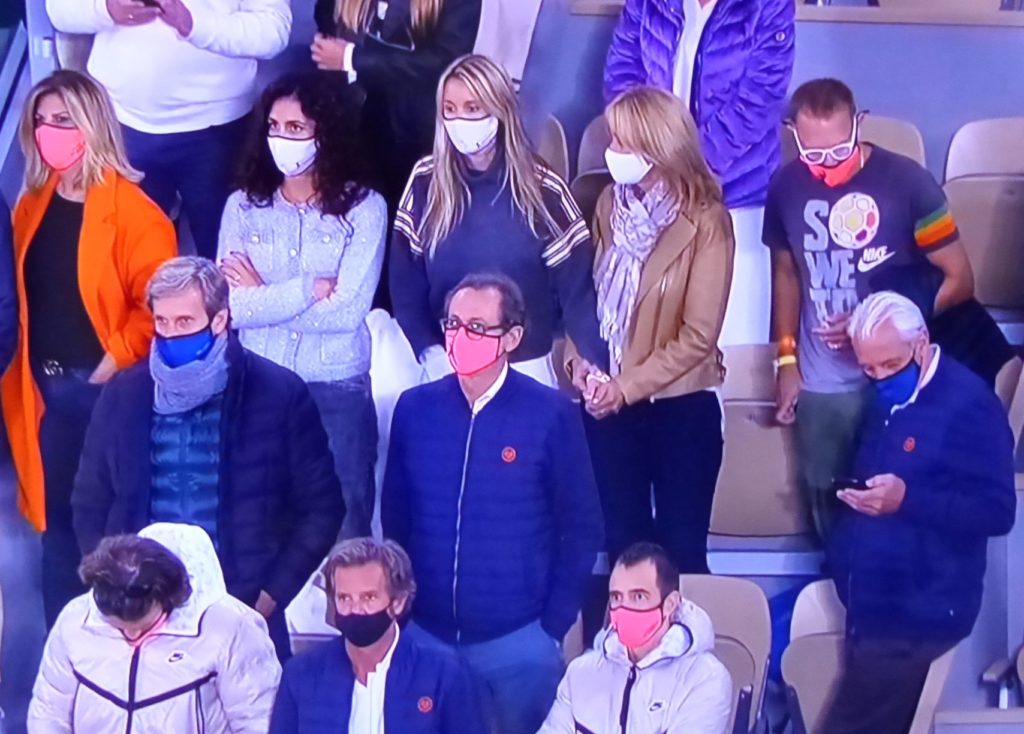
There was a nice moment during the final in the Nadal courtside seats – above his mother Ana Maria and sister Maria Isabel holding hands.
Nadal has won his Roland Garros titles in bunches – four in a row from 2005 to 2008, five in a row from 2010 to 2014 and four in a row from 2017 to 2020.
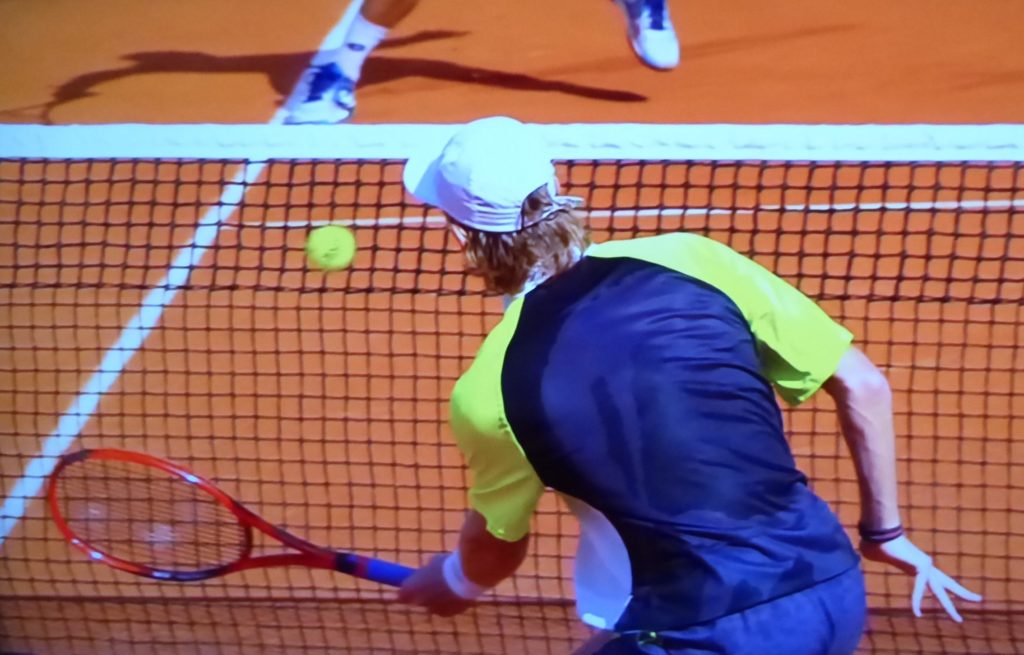
As for Canadians at the 2020 French Open – the results were comme ci, comme ça. Denis Shapovalov reached the second round and Félix Auger-Aliassime, Vasek Pospisil as well as Steven Diez all exited in the first round while both Leylah Annie Fernandez and Genie Bouchard made it to the third round.
Going out 7-5, 6-7(5), 6-3, 3-6, 8-6 to unheralded Roberto Carballes Baena in the second round was a big disappointment for the ninth-seeded Shapovalov. It was a match he normally would win, especially considering he served for it twice in the final set. But he has to give credit to the plucky No. 101-ranked Spaniard, chalk up the result to red-clay experience and not forget he was coming off a terrific run at the Italian Open before losing 6-4, 5-7, 7-6(4) to an in-form Diego Schwartzman in the semi-finals.
Auger-Aliassime, a first-round 7-5, 6-3, 6-3 loser to crafty Yoshihito Nishioka of Japan, has been going through a rough patch – 1-3 at 2020 clay-court events in Rome, Hamburg and Roland Garros. But that’s not totally unexpected for a 20-year-old in this outlier year of Covid-19.
Pospisil losing 6-3, 6-1, 6-3 to No. 7 seed Matteo Berrettini was the logical result, particularly when he didn’t play any prep tournaments on clay. He’s best to focus on his impressive round-of-16 finish at the US Open on hard courts – with clay off the cards for him until at least next May.
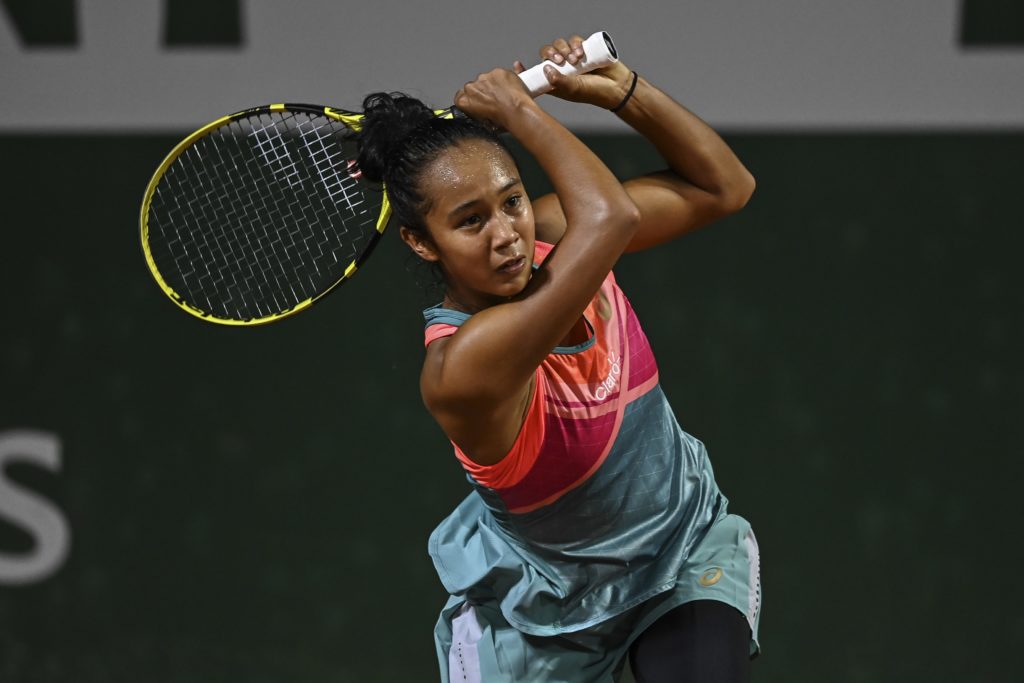
Fernandez continued her remarkable rise, reaching the third round of Roland Garros with wins over No. 36-ranked Magda Linette of Poland and No. 47 Polona Hercog of Slovenia. She led seventh seed Petra Kvitova 5-1 in the first set of their third-round match but gradually the 30-year-old Czech rallied for a 7-5, 6-3 win after being outhit for the first six games of the clash between lefthanders. At just 18, Fernandez has raised her ranking from No. 209 to No. 89 in the limited 2020 season. With only two WTA tournaments left this year – Ostrava (Czech Republic) and Linz (Austria) – it’s unlikely her ranking will allow her to play any regular tour events. But she is entered in the main draw for the $80,000 (US) ITF event in Tyler Texas, beginning on October 26th.
And one more thing: maybe now that Fernandez is ranked in the top-100, the WTA can post an actual picture of her with her bio on its website.
Like Fernandez, Bouchard, 26, has made significant progress in 2020 – starting with the resumed tour in Prague in August, her ranking has moved up from No. 330 to No. 140. She defeated Anna Kalinskaya of Russia and Australian Daria Gavrilova in her first two rounds before losing to the relatively unknown Swiatek 6-3, 6-2 in the third round. Bouchard has the distinction of being the only woman at this year’s French Open not to lose a 6-1 set to the Polish sensation.
She’s entered in the $80,000 ITF tournament in Macon, Georgia, next week – only in the qualifying at the moment but she could move into the main draw with a few withdrawals.
A fourth Canadian man, Spain-based Steven Diez, qualified for his first Grand Slam event before being beaten 4-6, 6-3, 6-3, 6-4 by No. 236-ranked Mackenzie McDonald of the U.S., the 2016 NCAA champion.
A ROLAND GARROS POTPOURRI
TSVETANA COVERS UP
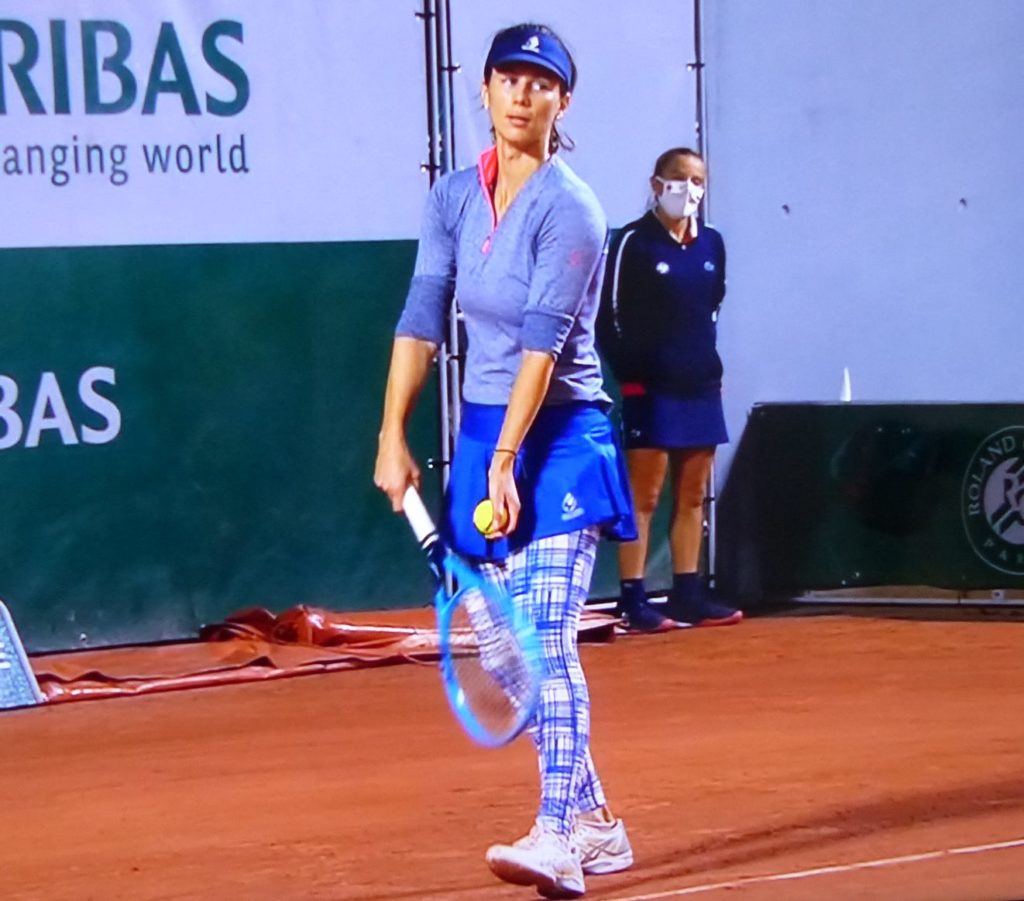
Tsvetana Pironkova, returning to the tour as a mother after three years away, was a surprise quarter-finalist at the US Open and reached the third round at Roland Garros. During the latter, played in much cooler temperatures this year, players outfitted themselves in various garbs. The 33-year-old Bulgarian, mother to two-year-old son Alexander, made one of the more colour co-ordinated, autumnal fashion statements,
LONG AGO ROLAND GARROS
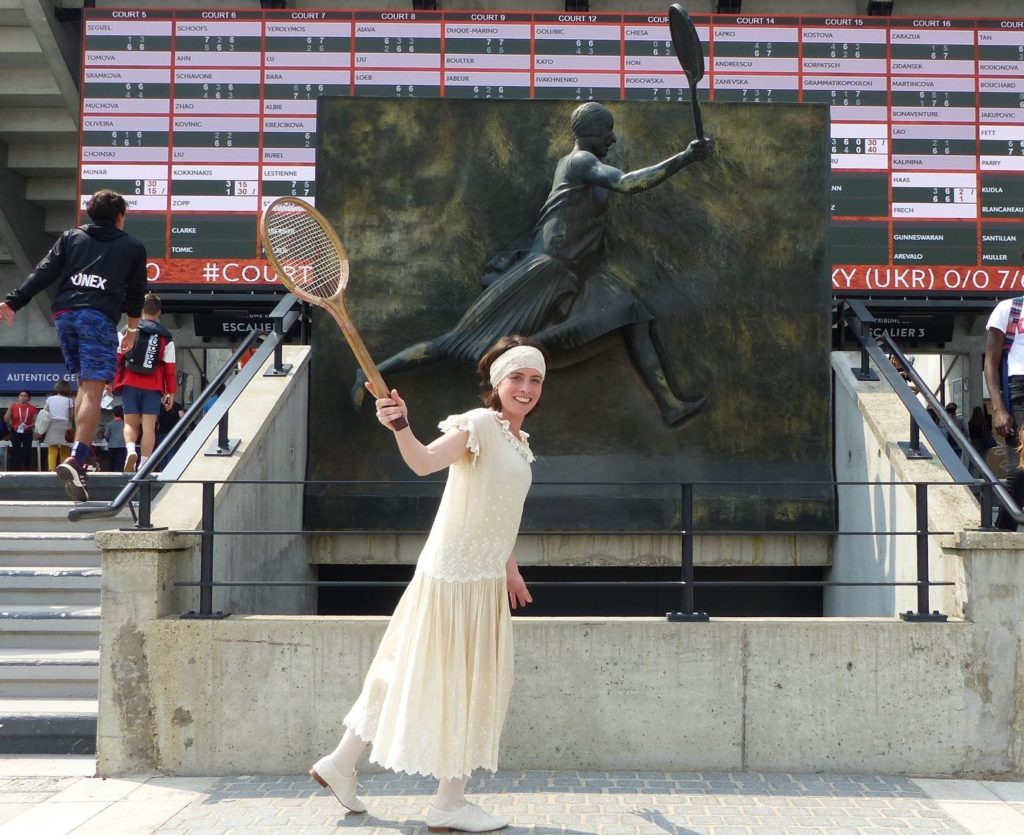
One day at the 1969 French Open – as described by the inimitable English tennis journalist Rex Bellamy.
“Day Two: and the most attractive match in the men’s first round, Santana vs. Cliff Drysdale, was played under floodlights, Santana came from behind to win easily in a heavy shower, with Drysdale handicapped by a pulled muscle . . . Stan Smith came from two sets and 1-4 down to beat Boro Jovanovic, a specialist on these courts . . . Roger Taylor had to scratch because he could not grip a racket: his hand was still bruised and swollen after its contact with the perimeter of Bob Hewitt’s left eye in a Berlin dressing room.”
Note: Bob Hewitt, an Australian who represented South Africa, was a combustible, combative player in his prime in the 1960s and 1970s. He was convicted in 2015 of sexual assault of female minors whom he had coached in the 1980s and 1990s in South Africa. After a trial, he was sentenced to six years in prison. Primarily a doubles champion, he was expelled from the International Tennis Hall of Fame in 2016.
VIVE L’EQUIPE
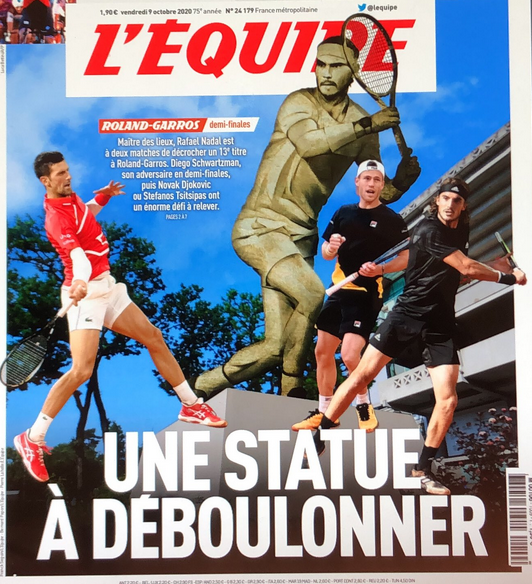
The French sporting daily L’Equipe has had the best roster of international tennis writers for decades. Unfortunately, its number of dedicated tennis specialists has dwindled from about a dozen to three or four nowadays. So it was encouraging to see an edition last week that not only featured the cover but also the first ten inside pages all about Roland Garros.
YOUNGSTERS IN PRIME SEATS
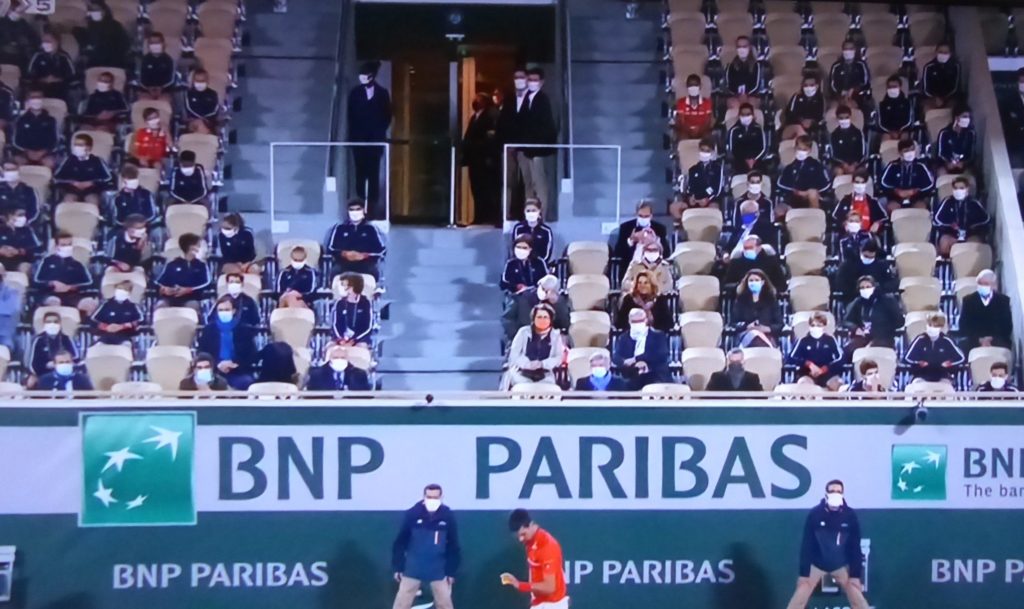
The Tribune Présidentielle at Roland Garros is the equivalent of Wimbledon’s Royal Box. During the late stages of the semi-final between Novak Djokovic and Stefanos Tsitsipas, ballkids were permitted to sit in the prime seats – a well-deserved reward for all their efforts during the two weeks.
THE TENNIS HORIZON
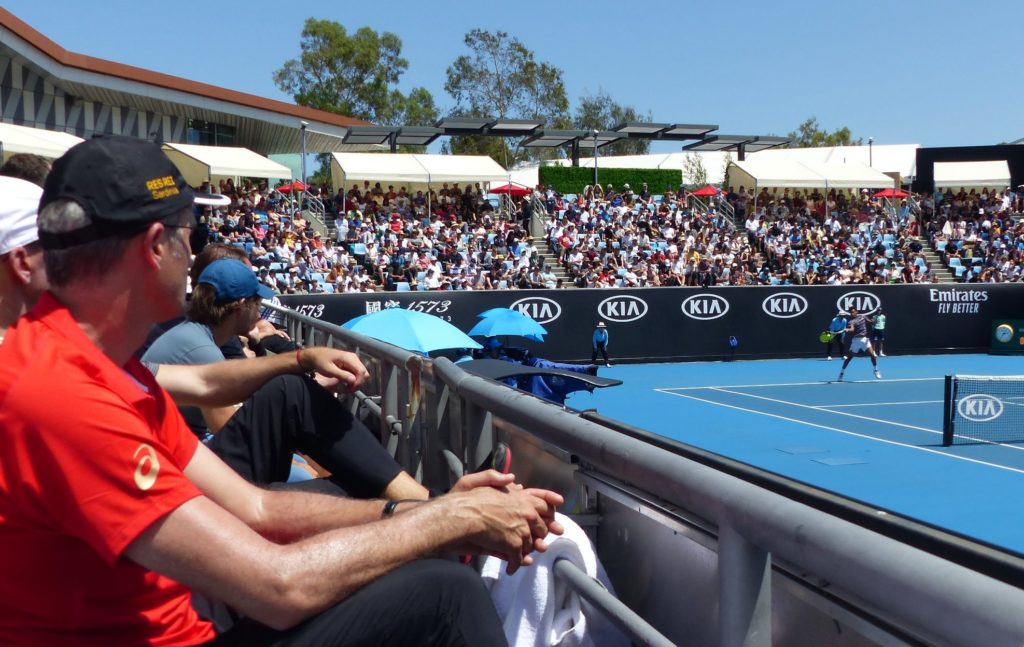
With the WTA only having events in Ostrava next week and Linz next month, and the ATP Tour line-up including a few tournaments culminating in the Vienna ATP 500 later this month, the Masters 1000 in Paris early next month and the ATP Finals in London in mid-November, all eyes turn toward the Australian Open scheduled for January 18 to 31 in Melbourne.
It definitely looks like that event will go ahead, although the players will have to quarantine for two weeks upon arrival. Tournament director Craig Tiley has announced that there will be practice facilities available for players while they isolate.
The result is that players will have to travel to Australia in mid-December to quarantine before the two weeks of warm-up events leading into the Australian Open. While there’s speculation that some players won’t want to be away for Christmas, it seems more likely most will be eager to make the sacrifice in these unique pandemic circumstances, especially when they have already spent so much time at home this year. The allure of sun and fun in the Antipodean summer should be more than enough to attract many ‘Northern Hemispherians.’
It also appears that, with both the WTA and ATP Tour tournaments in Auckland cancelled, the entire pre-Aussie Open season could be in Australia with a series of events in Brisbane, Sydney, Adelaide, Perth and maybe even Melbourne.
Australia, although Melbourne is in a lockdown situation for a few more weeks, has had much more success combating Covid-19 – a country about two thirds the size of Canada, it has had only 899 deaths compared to over 9,600 in Canada. And the state of Victoria, where Melbourne is located, has averaged about 10 new cases a day over the past two weeks while the province of Ontario had 649 new cases on Sunday alone.
It looks like visitors from out of the country, except for players, some officials and some media, will be out of luck for attending AusOpen ’21. There will likely be spectators on site – but probably only those from Australia and New Zealand.


